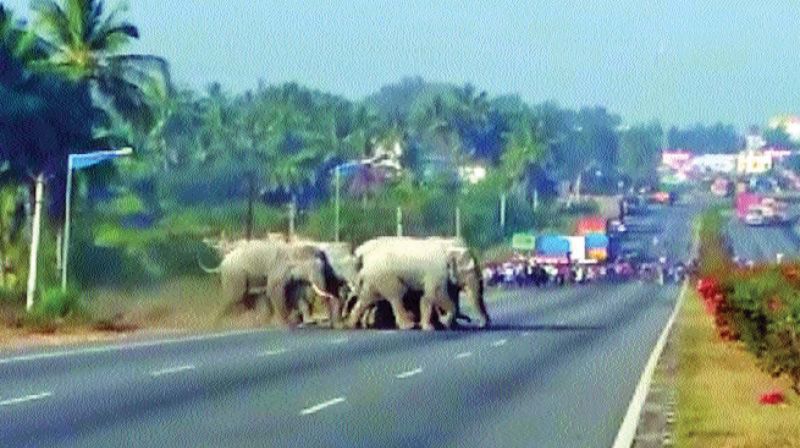Rains likely to bring back jumbos driven out of Tamil Nadu due to drought
Tamil Nadu is a prominent state in wildlife with usually about 3,000 to 4,000 elephants.

Chennai: Severe drought for two consecutive years has reduced the elephant population of Tamil Nadu and it is estimated that about 400 to 500 elephants could have migrated from Tamil Nadu to neighbouring states due to the unprecedented 2016-17 drought, a senior state official said, responding to the recent figures released by the Union ministry of environment of forests, which accounted a decrease of 10 per cent in India's elephant population.
“We knew that three per cent of our population was vulnerable to drought and road accident deaths and another good population migrated to nearby Kerala and Karnataka in search of water,” the official said adding that the state is now a home to 3,500 to 4,000 elephants roughly. And with rains now lashing TN forest areas these pachyderms are expected to return, the official said.
 Infographic
Infographic
“During dry months, usually from January to April, when there is no rainfall the elephant herds seek the neighbourhood of streams and shady forests”, said conservation scientist Dr A. Kumaraguru, member, Sathyamangalam Tiger Conservation Foundation.
From the month of July, after the first showers, they start roaming and feed on fresh grass. This grass in the hill tracts becomes long and coarse by July and August, and the elephants then show upward movements and this migration is common among elephants, he explains. The reason for the elephants and other animal’s migration into the high land continuous and uninterrupted hilly terrain, is for grazing, assured food and ideal breeding grounds.
Elephants used to move through all of the forest routes traditionally and especially during the night, but presently all routes are replaced by tracts of agricultural land and human settlements and there is a need to ban the traffic in all reserve forests during night hours, Kumaraguru added. TN is a prominent state in wildlife with usually about 3,000 to 4,000 elephants.
And if the population is close to 4,000 it is still a good news for TN foresters, explains wildlife biologist G. Kannan, who has studied elephants in the Mudumalai wildlife sanctuary. An elephant can travel up to 35 kilometres per day in search of fodder and water and migration is something common, but only if we maintain quality forests the animals do return.
Forest fragmentation is an alarming issue in Karnataka and Tamil Nadu and this needs to be addressed for a prolific jumbo population, Kannan added.
Why elephants migrate and how to track them
Elephant migration depends upon the availability of natural food and water. Changes in the season and scarcity of water and natural fodder species force wild animals to leave a place for a few months and reach new feeding grounds for fulfilling their feeding, water and other routine requirements.
An elephant can travel up to 35 kilometres per day in search of fodder and water. Identification of the elephants is important to verify their movement to prevent duplications during direct sightings. There is a possibility that the same group is observed in two to three different forests beats during a short span of time. For each individual bearing distinctive feature, identification marks like shape of the ears, tusk size and shape, scars and tubercles on the body, tail length, total number of individuals should be taken to study their migration.

